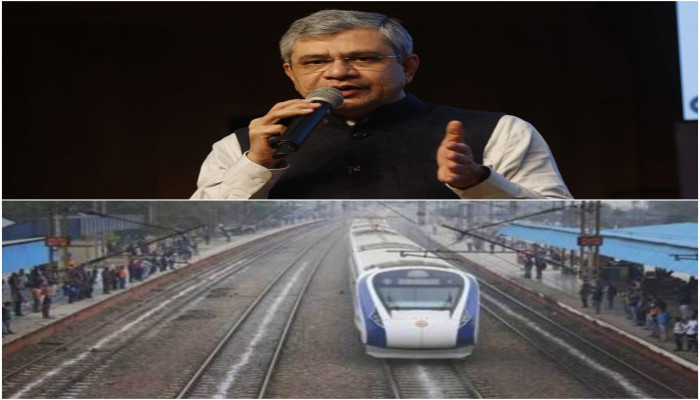UP, Maharashtra, Bengal lead railways station revamp drive
- In Reports
- 03:44 PM, Feb 14, 2025
- Myind Staff
The plan to transform railway stations across India into urban hubs has gained momentum with a significant allocation in the Union Budget. The government has dedicated over ₹12,000 crore for this initiative in the financial year 2025-26.
One thousand three hundred thirty-seven stations have been selected for redevelopment, with Uttar Pradesh leading the list with 157 stations. Maharashtra follows with 132 stations, while West Bengal has 101. Other states with a high number of stations slated for a makeover include Bihar (98), Gujarat (87), Rajasthan (85), Madhya Pradesh (80), Tamil Nadu (77), Andhra Pradesh (73), Karnataka (61), Odisha (59), Jharkhand (57) and Assam (50).
In the financial year 2023-24, Indian Railways spent ₹8,000 crore on the project and allocated ₹12,993 crore for it in 2024-25. While talking to The Indian Express, Minister for Railways Ashwini Vaishnaw stated, “We have no shortage of funds. Flexibility is maintained regarding allocation in the umbrella works. Amrit Bharat station scheme is one of these. As work progresses in different phases, we will get more funds in the revised estimates.” The budget allocation for this scheme falls under the Customer Amenities category.
The project, estimated to cost ₹1 lakh crore, aims to transform selected railway stations with airport-like amenities, including executive lounges, business centres, food plazas, retail shops and free WiFi. These upgraded stations will also feature local art and cultural elements to create a unique passenger experience.
So far, work has been completed on six stations: Rani Kamlapati Station in Madhya Pradesh, Gandhinagar Capital Station in Gujarat, Sir M Visvesvaraya Terminal Station in Karnataka, Ayodhya Dham Railway Station in Uttar Pradesh, the first phase of Gomti Nagar Railway Station in Uttar Pradesh and the second entry of Cuttack Railway Station in Odisha.
Beyond modern amenities and air-conditioned facilities, the project incorporates local heritage into station designs. For example, the redeveloped Ayodhya Dham Junction Railway Station, inaugurated in 2021 after an investment of over ₹240 crore, features a temple-like architectural design, artwork inspired by the Ramayana and traditional motifs adorning the halls and platforms.
Vaishnaw informed The Indian Express that the “station redevelopment programme sets a global benchmark for infrastructure development”.
“By integrating development with heritage and sustainability, we are creating world-class infrastructure that will benefit passengers, urban landscapes, and the nation’s economy,” he added.
In the current financial year, a substantial amount has been invested in upgrading key railway stations, including Jammu Tawi, Gorakhpur, Gomtinagar, Lucknow (Charbagh), Prayagraj Junction, Sabarmati, Surat, Chhatrapati Shivaji Terminus (CST) and Muzaffarpur Junction. The Ministry of Railways has placed 80 stations on a priority list, where progress is being closely monitored.
Officials stated that most station redevelopment projects are being carried out using the Engineering, Procurement and Construction (EPC) model, where a single contractor is responsible for completing the entire project. However, 20 stations, including Pune, Delhi Junction, Vijayawada, and Chennai Central, are being developed through a Public-Private Partnership (PPP) model, which involves government and private sector collaboration for managing public infrastructure and services.
A senior official from the Railways Ministry informed the scheme was developed after taking “learnings from earlier schemes that could not achieve its objective. To avoid bottlenecks, the ministry prepared a detailed plan while incorporating views from all stakeholders — banks, contractors, suppliers, and officials — at the procedural level. A workshop was conducted across all railway divisions and training was given to around 20,000 engineers,” he conveyed.
The Railway Board has prepared a standard tender document for all 68 railway divisions nationwide to use when inviting bids.
According to the official, “The redevelopment of railway stations would also have a multiplier effect on the economy, helping to improve economic growth and create new jobs.”







Comments